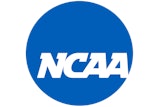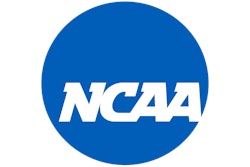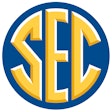
A study released Tuesday by The Institute for Diversity and Ethics in Sport reveals that the average gap in overall football graduation rates between white and Black football student-athletes increased for the 82 Football Bowl Subdivision (FBS) bowl-bound schools.
The academic success of FBS football student-athletes, as measured by the graduation success rate (GSR), remained at 83 percent, the same as in 2022. But a disparity exists between Black and white GSR.
"The gap between white and Black football student-athletes increased slightly this year, so it continues to be a major issue," Adrien Bouchet, the primary author of the study, told ESPN contributing writer Richard Lapchick. "The gap this year is 13.2 percent, up from 11.6 percent last year. Among the 82 bowl-bound teams, the average GSR for Black football student-athletes is 79.3 percent, slightly down from 79.5 percent in 2022. The average GSR for white football student-athletes increased from 91 percent in 2022 to 92.5 percent in 2023."
The study found that three of the final four national championship contenders — Alabama, Michigan and Washington — had graduation rates above 80 percent, while Texas had a lower graduation rate of 75 percent.
According to Lapichick, who summarized the results of the study, except for Texas, Alabama, Michigan and Washington had a gap between white and Black football student-athletes, but they were all better than the national gap. Their Black football student-athletes graduated at rates of 92% at Alabama, 88% at Michigan, 81 percent at Washington and 68 percent at Texas, while their white football student-athletes graduated at rates of 94 percent, 100 percent, 95 percent, and 92 percent, respectively. The 24 percentage point gap for Texas is almost double the national average of 13.2 percentage points.
For the entire field of bowl teams, there were very disturbing statistics, according to Lapichick:
• Eighty-two schools (100 percent) had GSRs of 70 percent or higher for white football student-athletes, which was around 1.2 times the number of schools with equivalent GSRs for Black football student-athletes (69 schools or 84.1 percent).
• In 2023, five bowl-bound teams had a GSR for Black football student-athletes at least 30 percentage points lower than that of white football student-athletes.
• In 2023, 22% of bowl-bound schools (18 total) had GSRs for Black football student-athletes that were at least 20 percentage points lower than the rates for white football student-athletes.
• Eight schools had an APR below 950 -- 21 points below the national average among these teams. New Mexico State had the lowest at 916. It was the first time a bowl-bound school had an APR below the 930 minimum score. They were joined by LSU at 923. Among the eight, there were three SEC schools: LSU, Tennessee at 946 and Texas A&M at 949.
• Nine schools had a GSR for Black football student-athletes that exceeded the rates for white football student-athletes, two more than in 2022: Wyoming, Auburn, UTSA, Louisiana, Arkansas State, Rice, Oregon State, Boston College and Northwestern.





































